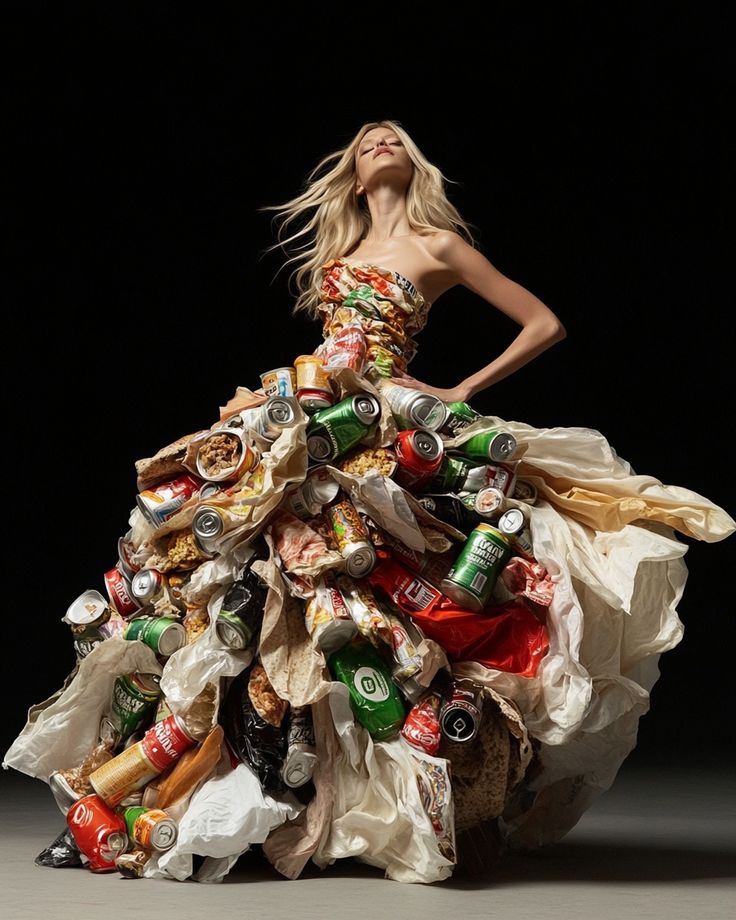Introduction to Avant-Garde Fashion
Avant-garde fashion is all about pushing the limits of what clothes can be. It’s not just about looking good; it’s about making a statement, challenging norms, and seeing clothing as a form of art. This style stands out with its unusual shapes, unexpected materials, and designs that make you think.
The term “avant-garde” comes from French, meaning “advance guard.” It was first used in the 19th century to describe artists and thinkers who were ahead of their time. Over the years, this idea spread into fashion, where designers began using clothes to express new ideas and emotions.
Today, avant-garde fashion is more than just runway shows. It’s found in art galleries, on social media, and even in everyday wear. It matters because it encourages creativity, sparks conversations, and shows that fashion can be more than just trends; it can be a form of personal and cultural expression.
History and Origins of Avant-Garde Fashion
How Art Inspired Bold Fashion Styles
Bold fashion did not just appear on its own. It came from new ideas in art that started in the early 1900s. Artists and designers were both looking for fresh ways to show emotion and creativity. Art helped people see beauty in new forms, and fashion began to follow that path. Many of these ideas came from art movements such as Cubism, Futurism, Dadaism, and Surrealism.
- Cubism: Breaking Shapes into Pieces
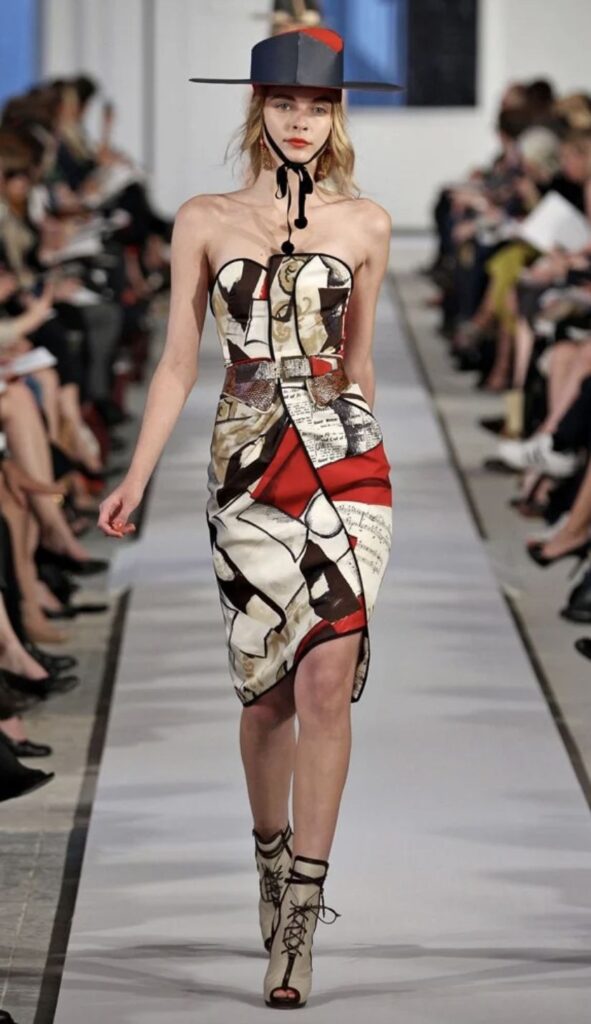
Image Source: Pinterest
Cubism started in Paris in the early 1900s with artists Pablo Picasso and Georges Braque. They stopped painting things the way they looked in real life. Instead, they broke objects into simple shapes like cubes and rectangles. A face could have eyes and a nose placed in strange spots.
This idea changed how people saw form and space. In fashion, it helped designers think differently about clothing shapes. They began to use sharp cuts, folds, and panels to show new ways the body could look in clothes. Cubism taught fashion that beauty can come from breaking rules and trying odd shapes.
- Futurism: Movement and Energy in Design
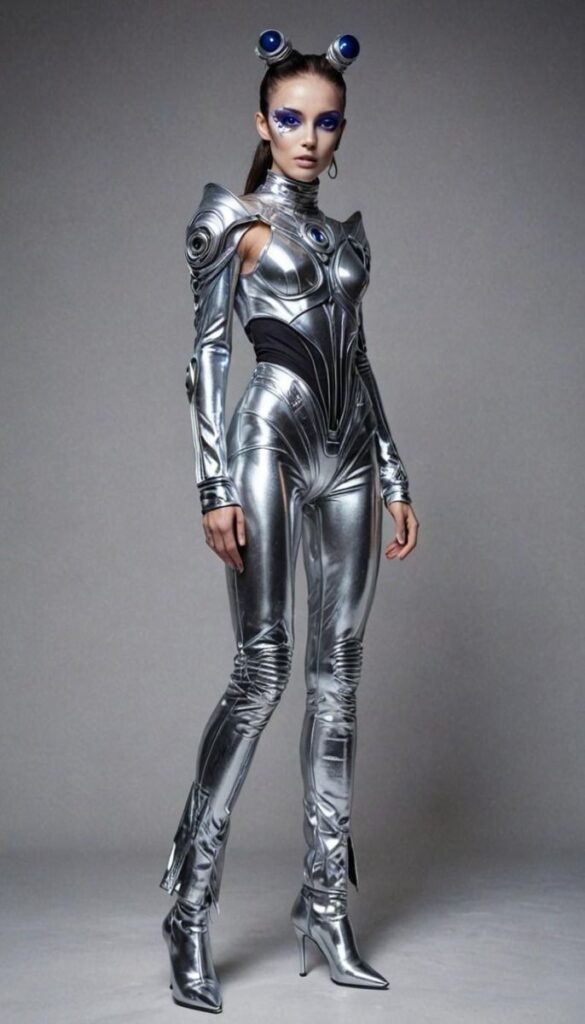
Image Source: Pinterest
Futurism began in Italy around 1909 with artists like Umberto Boccioni. These artists loved machines, speed, and modern life. They wanted art to move like a fast car or a busy street. Their paintings used strong lines and bright colors to show energy and motion.
This energy soon entered fashion. Designers started to use metallic fabrics and bold colors. Clothes began to look active, not still. Futurism helped fashion show motion and power, making clothes that looked ready for the future.
- Dadaism: Fun and Rebellion in Art
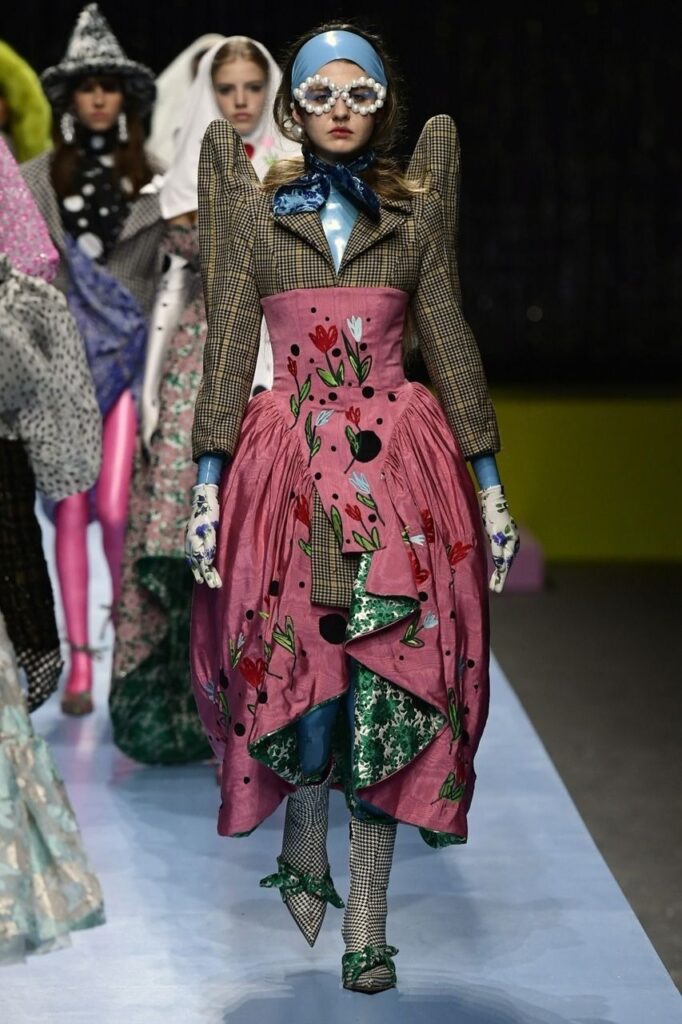
Image Source: Pinterest
Dadaism appeared in 1916 in Zurich, Switzerland, during World War I. Artists such as Marcel Duchamp and Hugo Ball were tired of traditional art. They wanted to make fun of rules. Duchamp called everyday objects, like a toilet or a bottle rack, “art.”
This movement taught people that anything could be creative. In fashion, designers started to use this playful idea. They made clothes from unexpected items like plastic, paper, or metal. Dadaism showed that fashion could also question what “normal” means. It was not just about beauty; it was about ideas.
- Surrealism: Fashion Inspired by Dreams
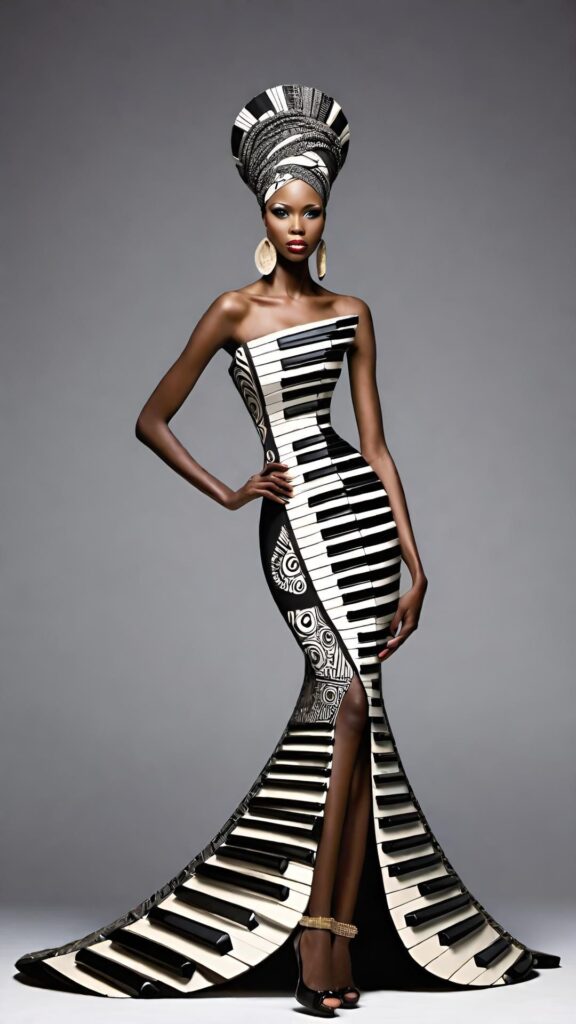
Image Source: Pinterest
Surrealism started in the 1920s with artists Salvador Dalí and André Breton. They wanted to show the world of dreams and hidden thoughts. Surrealist art often had odd or dreamlike images, like melting clocks or flying shapes.
This inspired designers such as Elsa Schiaparelli, who worked with Dalí. She made dresses with lobster prints and shoe hats. These designs looked strange but made people think. Surrealism taught fashion to mix imagination with design. Clothes could look like something from a dream and still make sense in a deeper way.
A Simple Look at Bold Fashion Through Time
1960s: A New Youth Style
In the 1960s, designers began to try new shapes and fabrics. Young people wanted clothes that felt modern and free. Mini skirts, bright colors, and geometric prints became popular. This was a time when bold fashion became a way to show independence.
1980s: Japan’s Designers Change the Game
In the 1980s, designers like Rei Kawakubo and Yohji Yamamoto from Japan brought a new look to the world. They made clothes that looked unfinished, torn, or uneven. The colors were often black, gray, or white. This challenged Western ideas that clothes should be smooth or fitted. It showed that beauty can come from imperfection and honesty.
2000s and Beyond: Art, Technology, and Emotion
In the 2000s, designers such as Alexander McQueen, Iris van Herpen, and Rick Owens changed bold fashion again.
- Alexander McQueen told stories with his designs, often exploring dark or emotional themes.
- Iris van Herpen used 3D printing and science to make dresses that looked like sculptures.
- Rick Owens made clothes that were simple but strong, often using layers and rough edges.
These designers mix technology, emotion, and design. Their work shows that fashion can still surprise people.
Core Characteristics of Avant-Garde Fashion
Rare Shapes and Silhouettes
Avant-garde fashion often features bold volumes, asymmetry, and layering. These designs break away from traditional silhouettes, creating garments that are more sculptural than wearable.
Innovative Materials
Designers use a wide range of materials, from traditional fabrics to metals, plastics, and recycled materials. This experimentation allows for unique textures and forms that challenge conventional ideas of clothing.
Fashion as Art and Expression
Avant-garde fashion is not just about clothing; it’s about conveying ideas and emotions. Designers use their creations to make statements about society, politics, and culture, turning fashion into a form of art.
Breaking Gender Norms
Many avant-garde designs blur the lines between traditional gendered clothing. Androgynous and gender-neutral styles are common, reflecting a more fluid approach to identity and fashion.
Top 5 Art Movements or Events that invented Avant Garde Fashion
- Rei Kawakubo (Comme des Garçons)
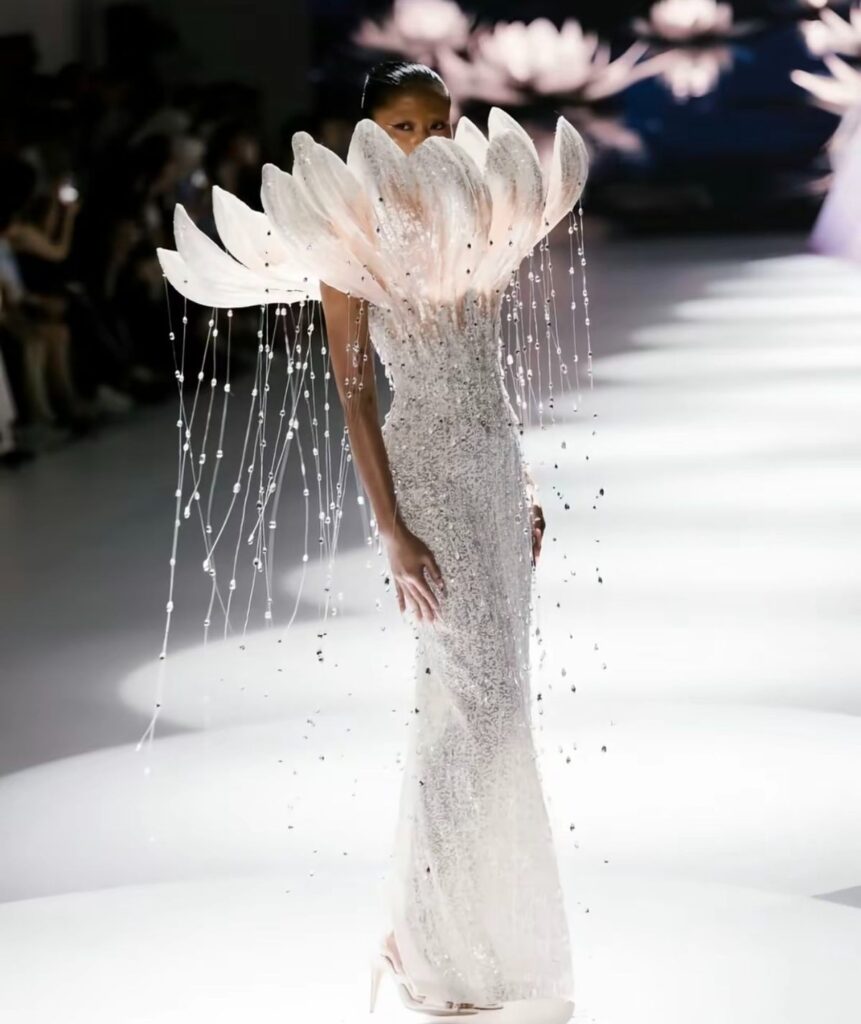
Image Source: Pinterest
Rei Kawakubo is a Japanese designer and the founder of Comme des Garçons. She is known for creating clothes that look more like art than everyday wear. Her work often questions what people consider beautiful. Many of her collections feature uneven shapes, torn fabrics, and unusual proportions. These choices are not mistakes; they are meant to make people think differently about how clothes can look and feel. According to The Metropolitan Museum of Art, her designs are often described as “anti-fashion” because they reject the usual rules of style and formality.
- Yohji Yamamoto
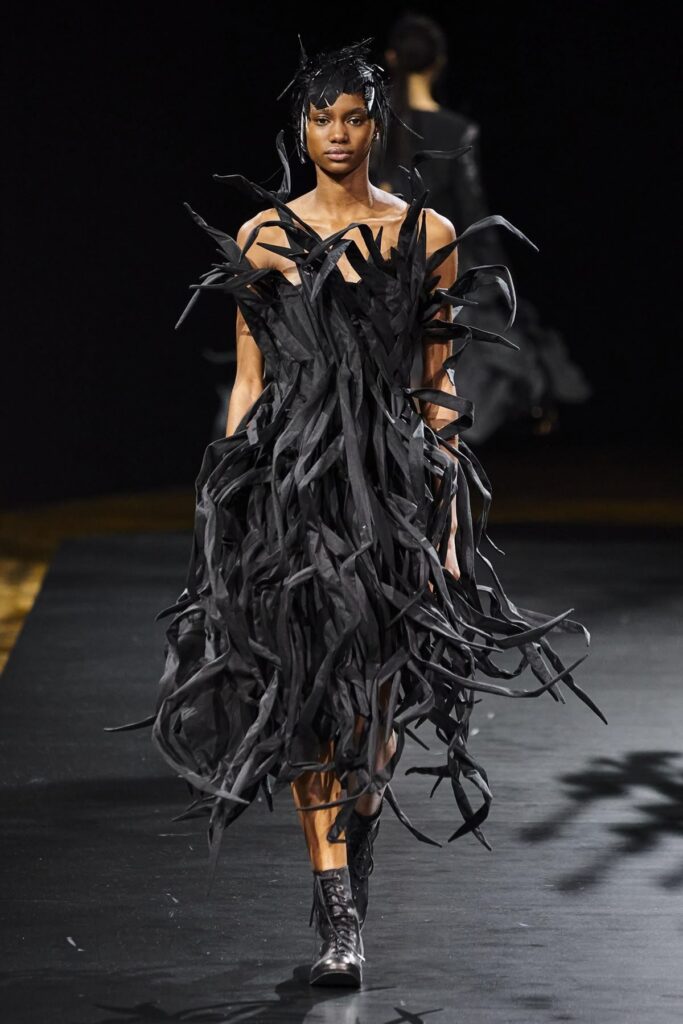
Image Source: Pinterest
Yohji Yamamoto is another leading name in avant-garde fashion. He is famous for his loose, flowing clothes, often in black. His designs are inspired by Japanese culture and the idea of finding beauty in imperfection, known as wabi-sabi. Instead of following seasonal trends, Yamamoto focuses on shapes, comfort, and freedom of movement. In an interview with Vogue, he explained that fashion should give people strength, not pressure them to fit into someone else’s idea of beauty.
- Alexander McQueen

Image Source: Pinterest
Alexander McQueen’s work was emotional, bold, and dramatic. He treated fashion shows like storytelling, using lighting, music, and powerful themes. Many of his collections explored ideas about life, death, and personal identity. McQueen often said that fashion was his way of expressing how he saw the world. The Victoria and Albert Museum notes that his designs blended beauty and darkness, challenging people to see fashion as a serious art form rather than just clothing.
- Iris van Herpen
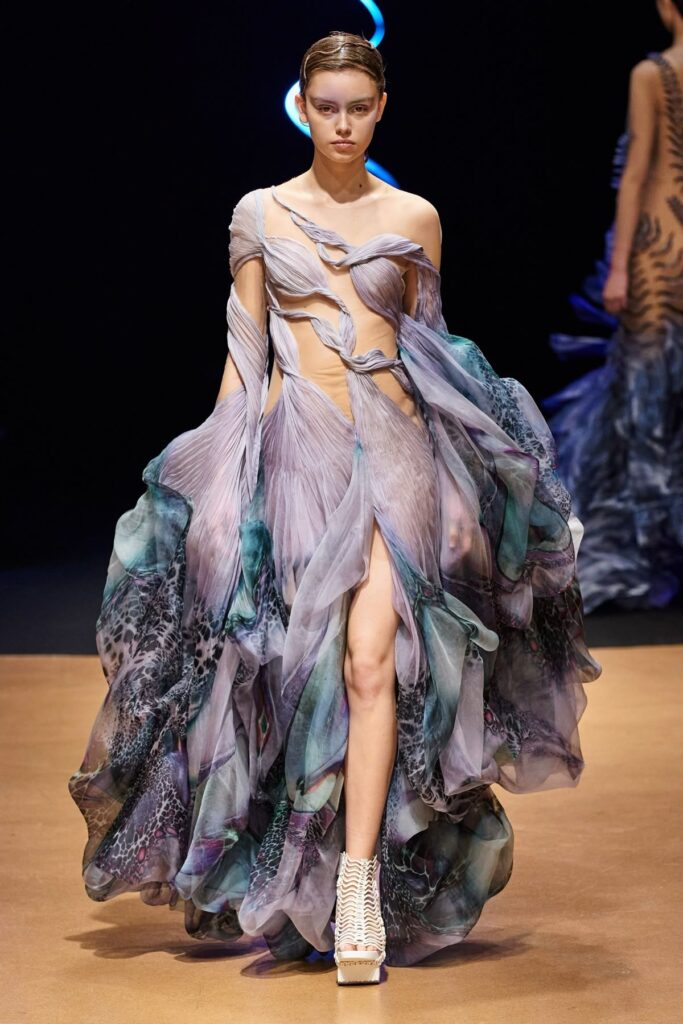
Image Source: Pinterest
Iris van Herpen is a Dutch designer known for mixing technology and fashion. She was one of the first designers to use 3D printing in clothing design. Her dresses often look like sculptures, inspired by science, nature, and digital art. In a talk with TED, van Herpen explained that she sees fashion as a bridge between imagination and reality, showing how new tools can change how we create and wear clothes.
- Rick Owens and Martin Margiela
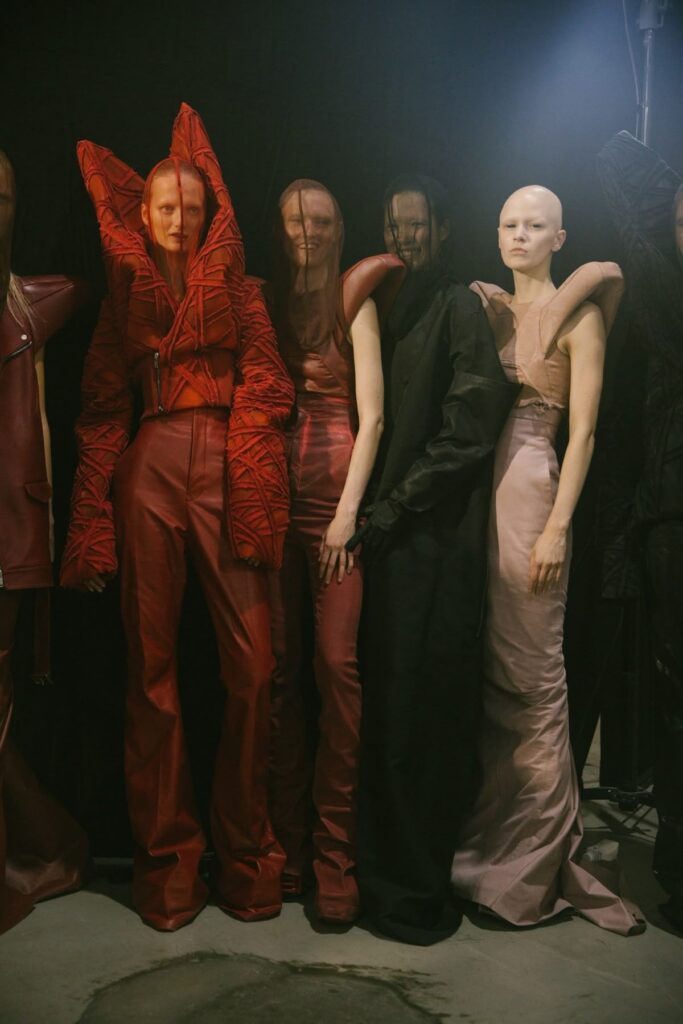
Image Source: Pinterest
Rick Owens and Martin Margiela are two designers who helped shape modern avant-garde fashion. Owens focuses on simplicity with a dark and rough style. His clothes use layers, draping, and neutral colors to create a look that feels both modern and ancient. Margiela, on the other hand, became famous for taking clothes apart and putting them back together in new ways. He often hides his own identity, letting the designs speak for themselves. Both designers have influenced a generation of artists and stylists who see clothing as a way to question rules and express independence. The Fashion Institute of Technology Museum describes their work as “raw yet refined,” showing that fashion can be creative even when it looks unfinished.
Avant-Garde vs Other Fashion Styles
Haute Couture vs Avant-Garde
While both haute couture and avant-garde fashion are high-end, they differ in purpose and technique. Haute couture focuses on craftsmanship and luxury, with designs that are often elegant and wearable. Avant-garde fashion, on the other hand, prioritizes innovation and artistic expression, sometimes at the expense of wearability.
High Fashion vs Avant-Garde
High fashion often sets trends that later get adopted by mainstream fashion. Avant-garde fashion, however, tends to be ahead of the curve, influencing high fashion and challenging its norms.
Anti-Fashion and Its Connection
“Anti-fashion” is a term used to describe styles that reject traditional fashion norms. It overlaps with avant-garde fashion in its rebellious spirit, often using clothing to make social or political statements.
How Avant-Garde Fashion Influences Everyday Style
Building Statement Pieces
Incorporating avant-garde elements into everyday wear can be as simple as choosing a jacket with an unusual shape or wearing shoes with unexpected materials. These statement pieces can add a unique touch to any outfit.
Balancing Creativity and Wearability
While avant-garde fashion is about creativity, it’s important to balance bold designs with practicality. Mixing avant-garde pieces with more traditional items can create a look that is both stylish and wearable.
Styling Examples and Outfit Ideas
For a casual look, pair a sculptural top with simple jeans. For a more formal setting, choose a dress with an asymmetrical hemline. Accessories like oversized hats or geometric jewelry can also add an avant-garde flair to any outfit.
Modern Trends in Avant – Garde Fashion
Technology and Digital Fashion
Advancements in technology have allowed designers to experiment with new materials and techniques. 3D printing, augmented reality (AR), and virtual reality (VR) are being used to create innovative designs and digital fashion shows.
Sustainability and Innovation
Many avant-garde designers are focusing on sustainability, using recycled materials and ethical production methods. Brands like Hodakova and Melke are leading the way in creating eco-friendly, artistic clothing.
Cultural Impact and Media
Social media platforms have given avant-garde fashion a wider audience. Influencers and celebrities are showcasing bold, experimental styles, bringing avant-garde fashion into the mainstream.
Tips for Embracing Avant – Garde Fashion
- Start Small: Add one avant-garde piece into your outfit, like a unique accessory or a boldly shaped garment.
- Mix and Match: Combine avant-garde items with more traditional pieces to create a balanced look.
- Know Your Body: Choose designs that flatter your body shape and make you feel confident.
- Experiment: Don’t be afraid to try new styles and combinations. Fashion is about personal expression.
The Future of Avant-Garde Fashion
Emerging designers are continuing to push the boundaries of fashion, incorporating new technologies and materials into their designs. As society becomes more focused on sustainability and individuality, avant-garde fashion is likely to play a significant role in shaping the future of style.
Conclusion
Avant-garde fashion is more than just clothing; it’s a form of art and expression. By embracing bold designs and challenging traditional norms, it encourages creativity and individuality. Whether you’re looking to make a statement or simply explore new styles, avant-garde fashion offers endless possibilities for personal expression.

